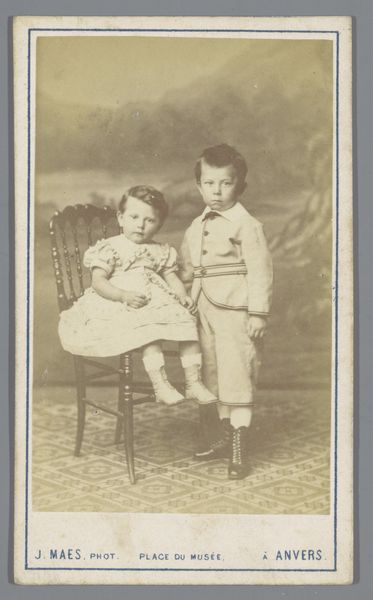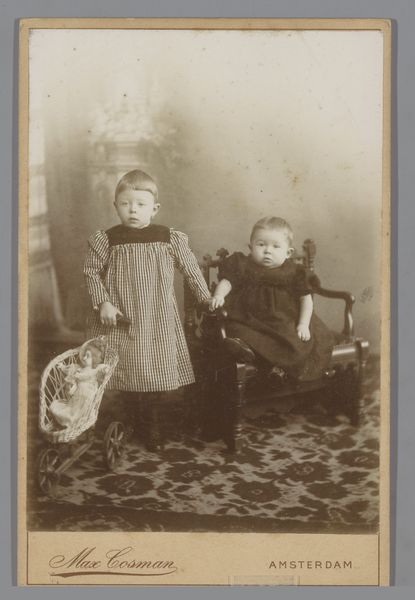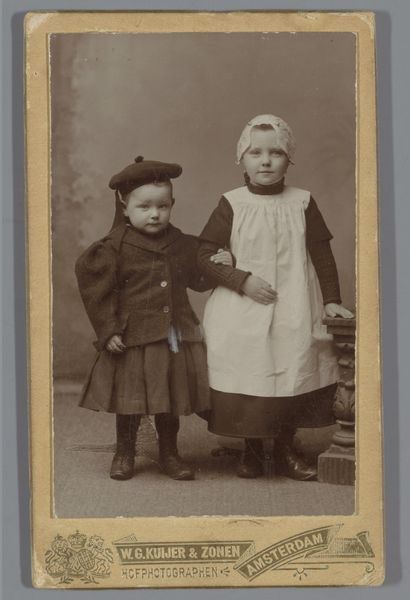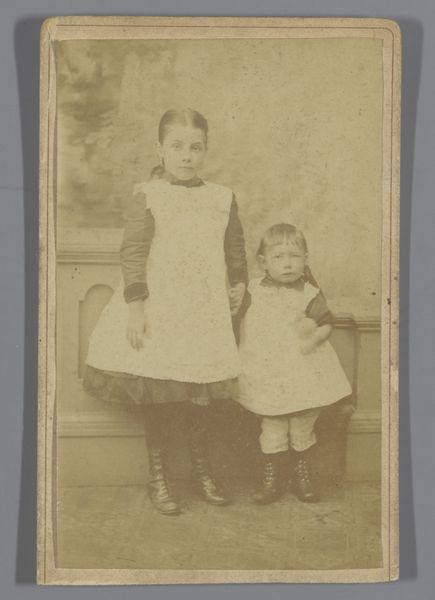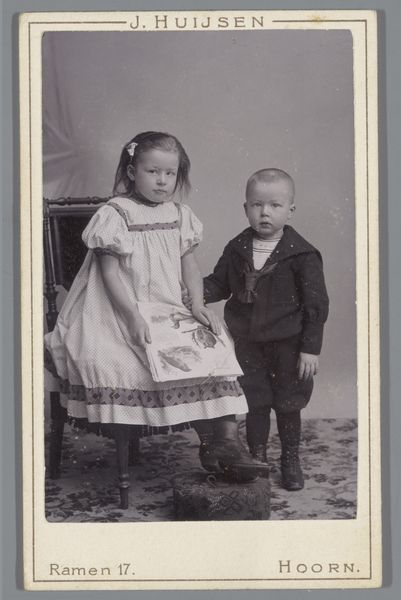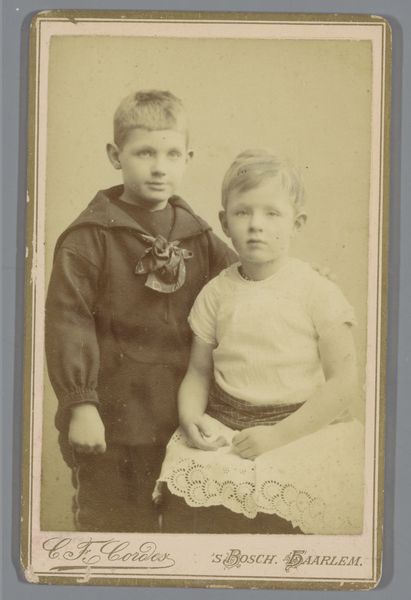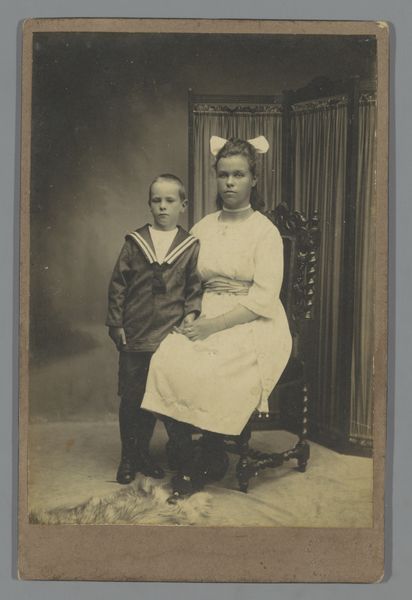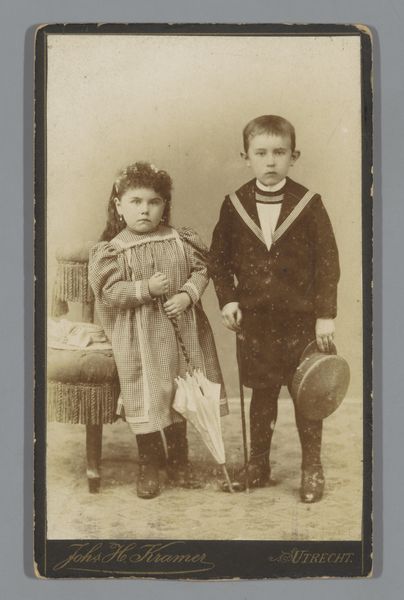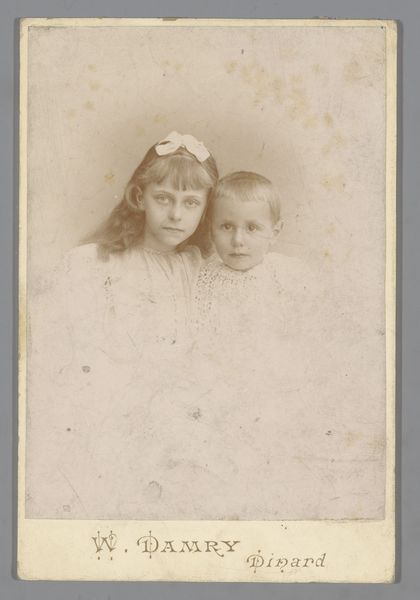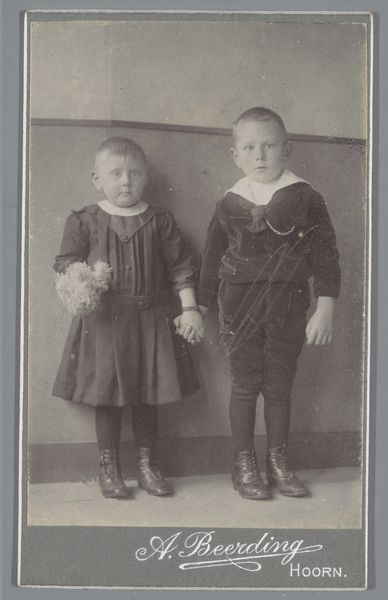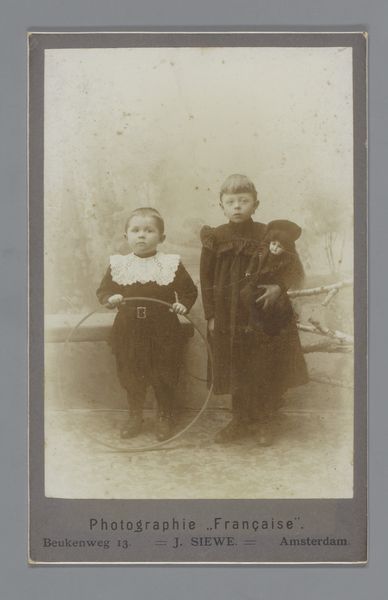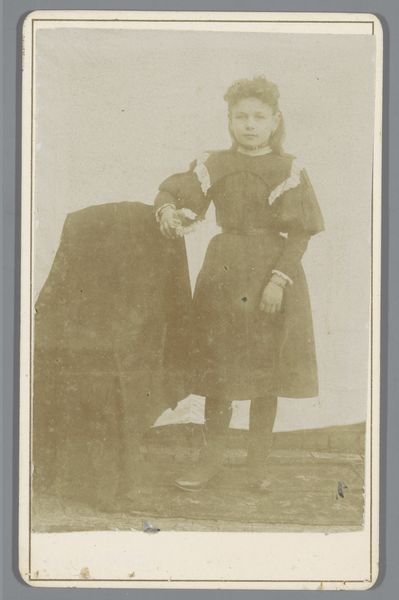
photography, gelatin-silver-print
#
portrait
#
vintage
#
photography
#
gelatin-silver-print
#
genre-painting
Dimensions: length 104 mm, width 63 mm
Copyright: Rijks Museum: Open Domain
Curator: This captivating piece, simply titled "Portret van twee onbekende kinderen, aangeduid als H. en G. Haan," a gelatin-silver print captured between 1890 and 1910, invites us to reflect on childhood and representation. The photograph is attributed to D. Fraenkel & Zoon of Amsterdam. Editor: There's something almost unsettling about it. The limited tonal range and the stark poses of the children create a feeling of formality, even a certain severity. Look at the strong horizontal lines created by the door behind them juxtaposed against the curve of the chair back—it’s strangely captivating. Curator: I see that austerity too. The formal dress—the boy’s sailor suit, the girl’s lace-trimmed dress—speaks volumes about the era's conventions around portraying children, particularly in relation to class and aspiration. It also shows their parents concern about social mobility in what seems a constructed or fabricated world. Editor: The composition is interesting; how the older boy is standing, protective, placing his hand over the girl seated in a somewhat too large chair. Consider also that both have similar hairstyles - are we meant to assume that these individuals represent certain values and continuity from one generation to the next? Is this what genre painting in the visual culture of the period suggests? Curator: Possibly! They embody both vulnerability and stoicism, mirroring perhaps societal expectations for them even then. The muted sepia tones and soft focus add to that sense of looking back across time. There is indeed vulnerability and tenderness co-existing, creating tension in what could have been just a sentimental portrait. Editor: Yes, and considering the image's lack of sharp focus and muted palette, it could even represent or serve as a tool to evoke cultural memory; to remind the audience of similar family portraits in their own histories, adding depth to a study on identity. Curator: Ultimately, what stays with me is this portrait's exploration of the silent language of early childhood—of duty and selfhood amidst societal constraints. Thank you for providing us new lenses with which to reflect! Editor: And I am grateful to you, as this photograph's quiet strength makes one contemplate our perception of youth as expressed via lines, texture, and symbolic weight.
Comments
No comments
Be the first to comment and join the conversation on the ultimate creative platform.
